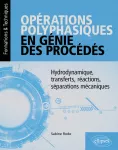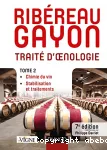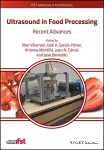Adresse
Infodoc : Réseau des bibliothèques et centres de documentation d'AgroParisTechFrance
contact

Catégories
Documents disponibles dans cette catégorie (7)
 Ajouter le résultat dans votre panier Faire une suggestion Affiner la recherche Interroger des sources externes
Ajouter le résultat dans votre panier Faire une suggestion Affiner la recherche Interroger des sources externes
 Livre
Livre978-3-319-45774-11 vol. (XX-649 p.)
1 vol. (XX-649 p.)ISBN : 978-3-319-45774-1 
 Livre250 F
Livre250 F978-2-85206-808-71 vol. (XI-273 p.)
1 vol. (XI-273 p.)Prix : 250 F ISBN : 978-2-85206-808-7 
 Livre46 EUR
Livre46 EUR978-2-7430-0682-21 vol. (XII-275 p.)
1 vol. (XII-275 p.)Prix : 46 EUR ISBN : 978-2-7430-0682-2 
 Livre79,90 EUR
Livre79,90 EUR978-2-340-07855-01 vol. (756 p.)
1 vol. (756 p.)Prix : 79,90 EUR ISBN : 978-2-340-07855-0 
 Livre
Livre978-1-4987-2296-41 vol. (XIX - 430 p.)
1 vol. (XIX - 430 p.)ISBN : 978-1-4987-2296-4 
 Livre125 EUR
Livre125 EUR978-2-10-076561-41 vol. (XXIV-616 p.)
1 vol. (XXIV-616 p.)Prix : 125 EUR ISBN : 978-2-10-076561-4 
 Livre
Livre978-1-118-96418-71 vol. (XXII-515 p.)
1 vol. (XXII-515 p.)ISBN : 978-1-118-96418-7




